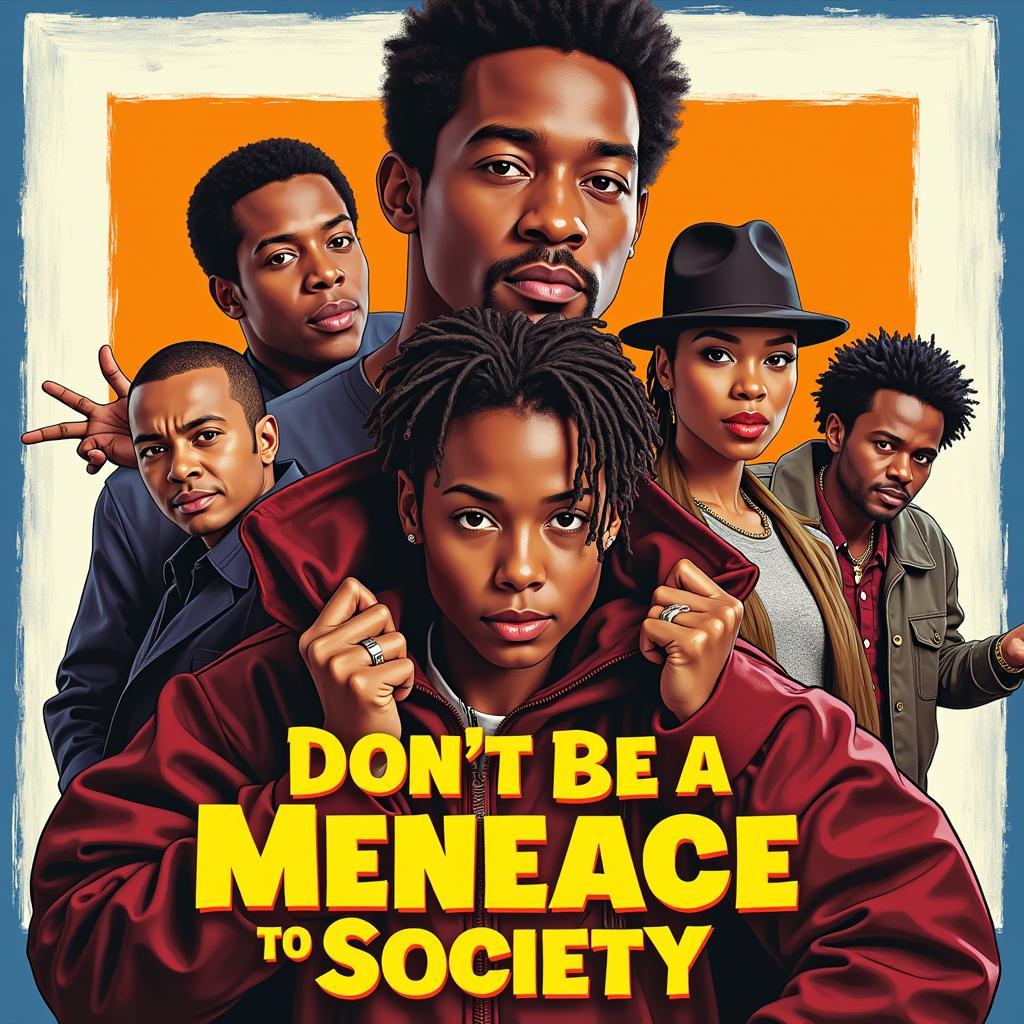The 1996 film “Don’t Be a Menace to South Central While Drinking Your Juice in the Hood” wasn’t your typical cinematic experience. This satirical masterpiece, often shortened to “Don’t Be a Menace to Society”, took aim at the then-popular genre of ‘hood films’, using humor to expose and critique prevalent stereotypes about African American communities. While the film was chock-full of outrageous gags and slapstick humor, its impact reached far beyond laughter. “Don’t Be a Menace to Society” sparked important dialogues about race, representation, and the perpetuation of harmful stereotypes in media.
More Than Just Laughs: Unpacking the Social Commentary
 Don't Be a Menace to Society movie poster
Don't Be a Menace to Society movie poster
While the Wayans brothers, the comedic geniuses behind “Don’t Be a Menace to Society”, were known for their over-the-top humor, this film went beyond mere entertainment. It cleverly utilized satire to highlight the dangers of portraying entire communities through a single lens. By exaggerating common tropes found in ‘hood films, the film forced audiences to confront the absurdity and harmfulness of these representations.
The Power of Parody: Challenging Perceptions Through Humor
Satire, when wielded effectively, can be a powerful tool for social commentary. “Don’t Be a Menace to Society” masterfully employed this tool, using humor to expose the ridiculousness of stereotypes often presented as reality in other films. By holding a mirror to these portrayals, the film challenged audiences to question their own biases and assumptions.
“Don’t Be a Menace to Society”: A Legacy of Challenging Stereotypes
 A group of people having a discussion about stereotypes in media
A group of people having a discussion about stereotypes in media
Even decades after its release, the impact of “Don’t Be a Menace to Society” resonates. It serves as a reminder of the power and responsibility of media representation. The film’s legacy lies in its ability to entertain while simultaneously raising awareness about the harmful effects of perpetuating stereotypes. By prompting laughter and thoughtful reflection, “Don’t Be a Menace to Society” encouraged viewers to look beyond simplistic representations and recognize the multifaceted nature of individuals and communities.